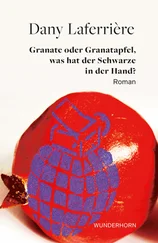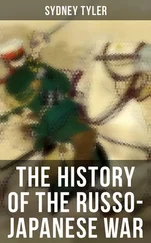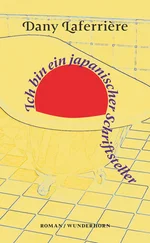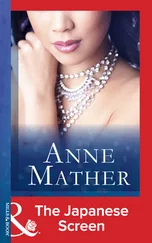By suggesting I talk to Noriko, Takashi gave me an idea: draw Midori’s portrait by talking to the girls. Never to her. Midori is a black hole that sucks in everything around her. Every electron is free as long as it stays in the magnetic field. Noriko is Fumi’s scapegoat. Tomo, Midori’s guardian angel. Hideko touched Midori’s ear, that fragile, perfect instrument (I got a close-up of that scene). Takashi going click, click, click. He never stops. He’s at one with his camera. Midori is considering doing a show about a photographer no one ever sees. According to Midori, the photographer is the true witness of our times. Takashi is obsessed with the napes of their necks. For a time, that’s all he photographed. Noriko tells me about Takashi, though Takashi pointed me in her direction first. She whispers in my ear that Takashi is a toxic, jesting little god with a rancorous heart. What? Her eyes look frightened. She urges me over to the window to bestow further confidences in a voice so low I can’t hear anything. What? I ask gently. Midori is in love with Eiko. No one knows, not even Eiko. Noriko laughs silently. She takes my hand and holds it longer than necessary. I feel my bones melting. My body, without structure, is about to slip to the floor like a dress. I pull my hand away and rush off to the bathroom. Don’t tell me I’ve been caught in the net of one of these vampirettes! Noriko watches me. I feel the intensity of her gaze on the nape of my neck. I follow Takashi without thinking and end up in the girls’ bathroom. In the mirror I spot Midori kissing Hideko. Takashi is dancing around them. The flash goes off. Midori smiles at me in the mirror. Hideko hasn’t noticed me yet. Midori passes Hideko, still in a fog of ecstasy, over to Takashi, who is too thin to hold her up. He tries every possible position to keep her standing. It looks like a scene from They Shoot Horses, Don’t They? I take her off Takashi’s hands and set her down gently on a cushion next to Fumi. I sit with the camera still running. Fumi tells me Midori will eat only a certain kind of fish, whose flesh contains a poison. Just enough to lightly paralyze the lips and tongue. Midori keeps a bit of fish in her mouth, then chooses a girl to kiss. They all avoid Midori’s lips. Hideko is the only one dumb enough to fall for it. A long hetaera kiss. Now Hideko is lying languorously on the cushion. Her eyes unfocused. A vague smile. The poison lasts only a few minutes. Midori bends and strokes her hair.
I GO BACK into the bathroom and discover Midori conversing with Takashi. His eyes are overly bright — the result of his last hit of heroin.
“I’d like to tell you something about Bjork…”
“Have you been drinking?”
“No. Why?”
“Are you sure? Because the girls like playing jokes.”
“What kind of jokes, Midori?”
“If you don’t know what I’m talking about, then I guess you don’t interest them.”
“I see…”
Midori glances past me, over my shoulder. I turn and see Eiko applying her makeup in the mirror. Eiko’s endless back reminds me of a stand of bamboo. All Midori’s energy is drawn into the nape of Eiko’s neck. Midori tries in vain to resist. In the mirror I catch Noriko watching Midori watching Eiko. You can read all of it in Midori’s face, drowning in one final wave of feeling. Midori, a master in the art of revealing other people’s secrets, is unmasked. Her face naked. Our very own Marquise de Merteuil, caught in her own game. In her armoire, each drawer is dedicated to a girl she has seduced. She keeps underwear, letters, miniature red daggers (she has an entire collection), inexpensive perfume (to make sure no one else wears it) and a black notebook in which everything is recorded, from the first gaze to the farewell kiss. Midori is always the first to leave. One night, Takashi slipped into Midori’s room and spent hours reading passionate letters written by girls who kept announcing their imminent suicide. The letters all shared the same morbid preoccupations. These girls adore toying with the idea of death. In Takashi’s opinion, they’re just bursting with so many useless tears, because suicide is a man’s business. As for death, a young virgin gives herself only to the bravest of samurai. Japanese identity has been built on trashy romanticism. Midori, face to face with Eiko. The light is so dazzling Midori has to close her eyes. She stands straight, motionless. I hold my breath. Captivated, Eiko watches Midori move towards her.
I DELIVER MIDORI to Eiko to trap Fumi. Fumi, whose heart is black with bitter passion and revolt, who dreams only of ending Midori’s reign. Fumi is secretly in love with Noriko. Hideko discovered her secret by keeping a small notebook where she noted all of Fumi’s underhanded actions for an entire year. Noriko was the victim of a good number of them. Hideko began by noting the circumstances in which the barbs were launched. She also noted the positions of the characters at the time the action took place. The atmosphere that held sway before she turned to Noriko and jabbed a banderilla into her back. And, of course, who laughed first? All of it written down, day by day, for an entire year. Hideko spent the long winter nights committing all this to paper. The work necessitated a good grasp of mathematics, which Hideko does have, since she’s doing her master’s at McGill. One evening, Hideko finally discovered the equation that would allow her to conclude without a doubt that Fumi was in love with Noriko. There is one constant: Fumi shoots her poison arrows at Noriko every time Midori seems interested in her, every time she turns to speak to her, touch her or even smile her way. Fumi then quickly moves to ridicule Noriko, who lowers her head. Fumi knows that Midori holds losers in contempt. Then Fumi quickly takes up position between Midori and Noriko. For a long time, Hideko thought Fumi was in love with Midori and simply wanted to eliminate a rival. Hideko had the idea of noting down the movements that followed and discovered that Fumi always arranged it so that Haruki came and placed herself between her and Midori. It took a while before Hideko understood that Fumi didn’t want Midori, but Noriko. By giving herself to Midori, Eiko brought down the house of cards. The center was emptied of its substance. Why did Hideko act that way? Whom did she want to destroy, besides Fumi? End. The credits roll. Ending a film with a question mark is not recommended. Which means we won’t see this one anywhere but the Museum of Fine Arts — on a rainy day. There are too many characters for the producer’s liking. Better cut them down to three. Who will make the cut? Midori, Eiko, Noriko. Or Midori, Fumi, Hideko. Or Midori, Tomo, Haruki. I know three is a good number, but I had a group in mind. A complete cluster of girls — an adolescent fantasy. You know that in a group, the girls who don’t say anything are as important as the ones who are front and center. The space between the girls, the time granted to each — this is the director’s work. Haruki is no less important in his eyes than Midori. And if Midori is in the foreground, that’s only because there is a background. Overly dense, you say? True, I could have singled out each girl with a particular detail. A color, a sign, whatever. But I film the same way I look at a film, and I get bored if the descriptions go on too long. I like it when things start fast, even a little disorganized, and at the end, a certain flavor lingers. I like to dally over the more pleasant scenes, which can open up the short film. And since all Japanese girls look the same to Westerners, I figure no one will see the difference anyway. So don’t strain yourself.
Читать дальше












